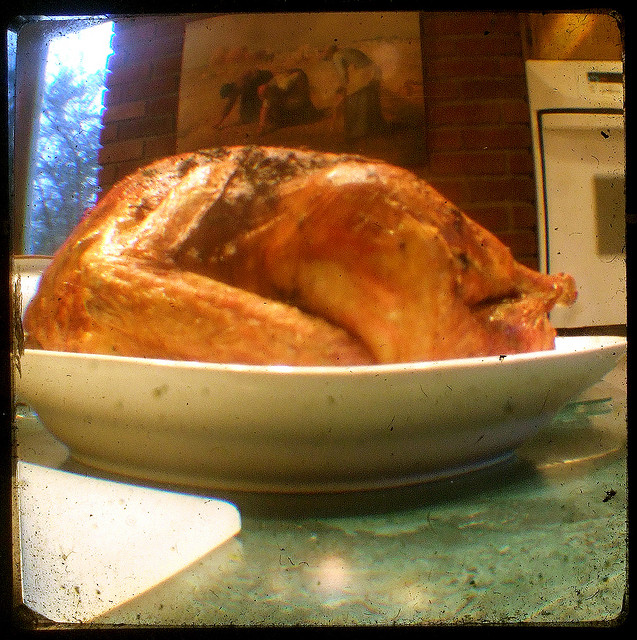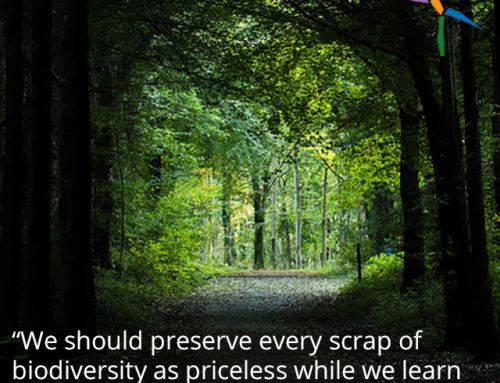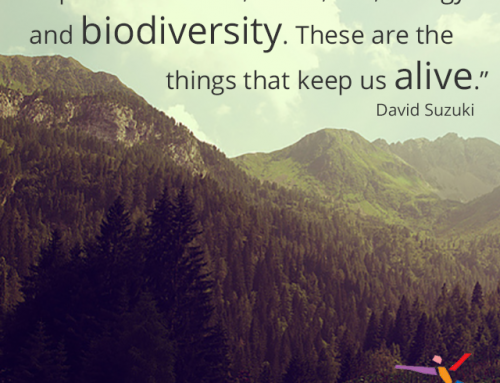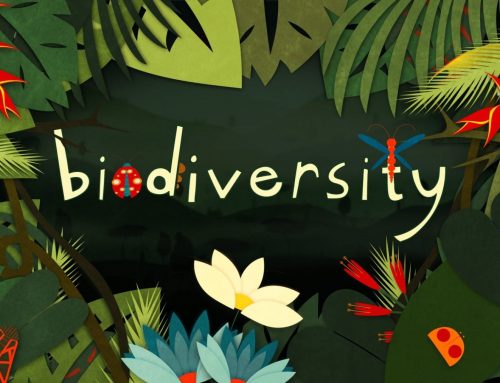Ah, Christmas (or your choice of warm winter holidays). It brings to mind many joys and traditions, but among the most popular (at least for many of us) is the delicious taste of your holiday turkey. Ok, perhaps you prefer the traditional holiday goose (we all have a little Dickens in us). Or maybe you’re a vegetarian and opt for the meat-free version. If the latter is true, then the numbers below don’t necessarily add up for you. We’re not saying that vegetarianism is, by default, a better choice. But generally speaking the carbon footprint of meat production is much, much higher than non-meat options. That said, while we’re not here to “bring you down” this holiday, we think it’s worth looking at the carbon footprint of that desired holiday feast!
A study done by academics from the School of Chemical Engineering and Analytical Science at Manchester University (in the UK) broke down the numbers for the carbon footprint of what most consider the standard holiday dinner: roast turkey, stuffing, roasted potatoes, cranberry sauce and basic trimmings. (Drinks were excluded).
What did they determine? Serving eight people a traditional holiday dinner generates 20kg of carbon dioxide emissions. To put that number in perspective, that’s the equivalent of 6000 car trips around the world! Now, multiply that out times all of the people having a very merry Christmas around a table full of food and think of the massive impact of that one day.
Why do we mention the turkey in particular? Because 60% of that carbon emissions number is wrapped up in the production of the turkey. That includes all steps in getting a turkey from a farm (or, sadly, potentially an industrialized food outlet) to your table. That’s inclusive of energy in the hatchery, the energy and resources used to grow the feed for the turkey, the energy and resources of the slaughter process, the energy and resources of packaging the turkey, the energy and resources of shipping the turkey and, finally, the much smaller energy and resources of actually cooking the turkey.
Professor Adisa Azapagic, from the University of Manchester, said: “Food production and processing are responsible for three quarters of the total carbon footprint, with the largest proportion — 60% — being related to the life cycle of the turkey. All stages in the supply chain have been considered, including raising the turkey, growing the vegetables, food storage, consumer shopping, cooking the meal at home and waste management. This includes the emissions of carbon dioxide due to energy consumption along the turkey supply chain and the emissions of methane and nitrous oxide generated due to the agricultural activities to raise the turkey.”
Of course, we’re not suggesting that you fast on Christmas! There are, however, some decisions you can make that will reduce the carbon footprint of your holiday feast.
If you want to have a great, robust holiday dinner but also want to try to reduce your overall carbon footprint, here are some simple steps to follow.
– Source your turkey locally! The first and most obvious way to reduce your carbon footprint is to source your turkey locally and preferably from a small farm. Yes, there’s still a carbon footprint associated with raising and slaughtering the turkey, but you can reduce the carbon footprint associated with food miles as well as with excessive packaging.
– Use all of the turkey! While you may not be able to entirely reduce your carbon footprint, you can reduce how much of it is wrapped up in “waste” by making sure to use all of your turkey. Almost every part, from the neck to the giblets, can be made into something. Our founder even loves to gnaw on the bones, go figure.
– Visit your local farmer’s market for other ingredients. Buy as many of your ingredients locally-sourced as possible. Yes, we’re all busy during the holidays and the grocery store is a fast fix. However, farmer’s markets always reduce your carbon footprint – and they have mental health benefits as well!
– Make only what you need. The traditional view of holiday meals is to make as much as possible. After all, it’s a feast. This year, consider making only what you need (and yes, that includes turkey leftovers!). The less you waste, the more you’ve justified the carbon footprint behind the meal. Holiday meals are an extra special time to celebrate the satisfaction of enough.
– Consider alternatives. If you’re looking for some new diet ideas, there are plenty of meat free tofurkey style alternatives to consider. Yes, they do have a carbon footprint. But it’s nowhere near as extensive as the carbon footprint of meat production.
The holidays are about enjoying family, friends, time-off from work and, yes, good food. Just be aware of your carbon footprint and take time out to think about ways to reduce it as you go along!
Have a tip on how to reduce food-related carbon footprint disasters this holiday? Tell us about it. Comment below or tell us about it on Facebook, Twitter, Pinterest or Instagram.
Related Info
Health benefits of a farmer’s market.
Photo Credits: nesster and David Lewis via Flickr






